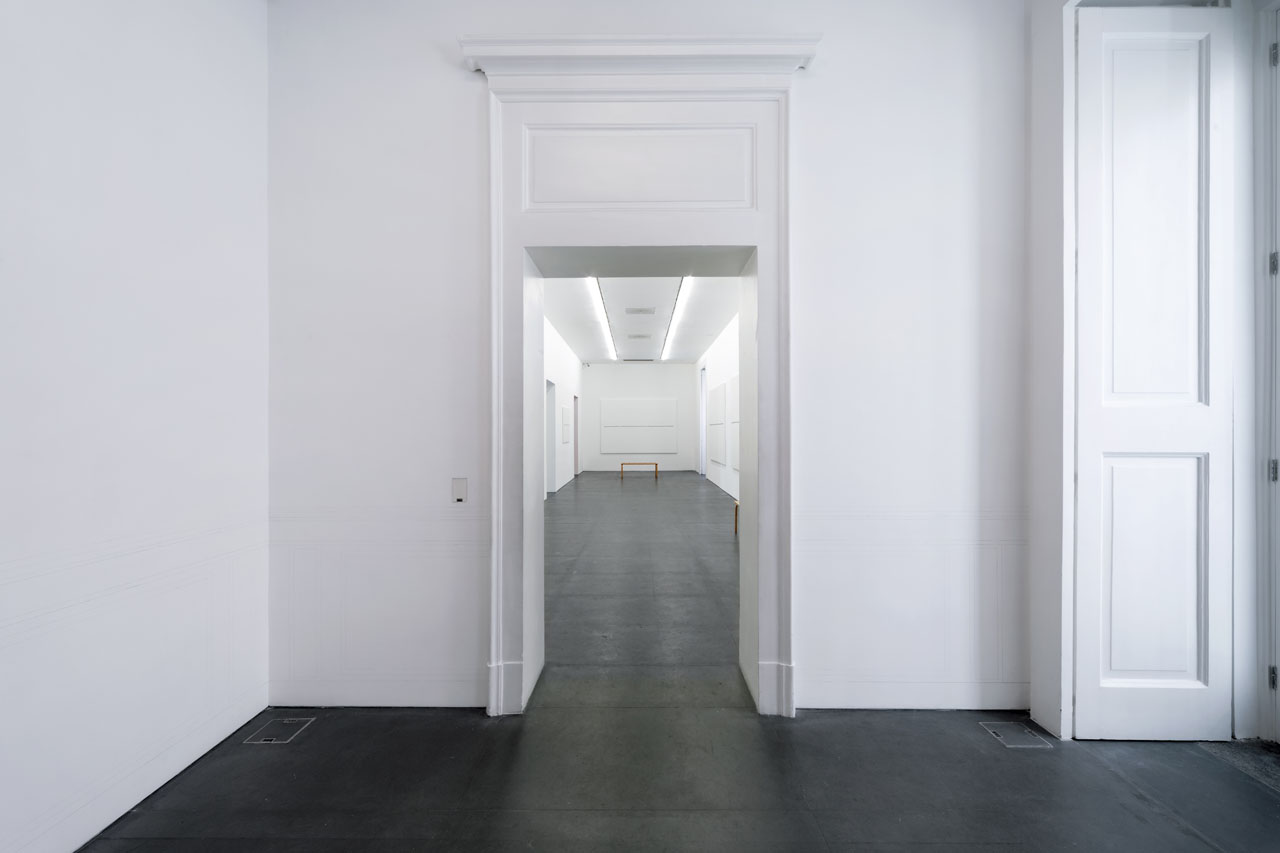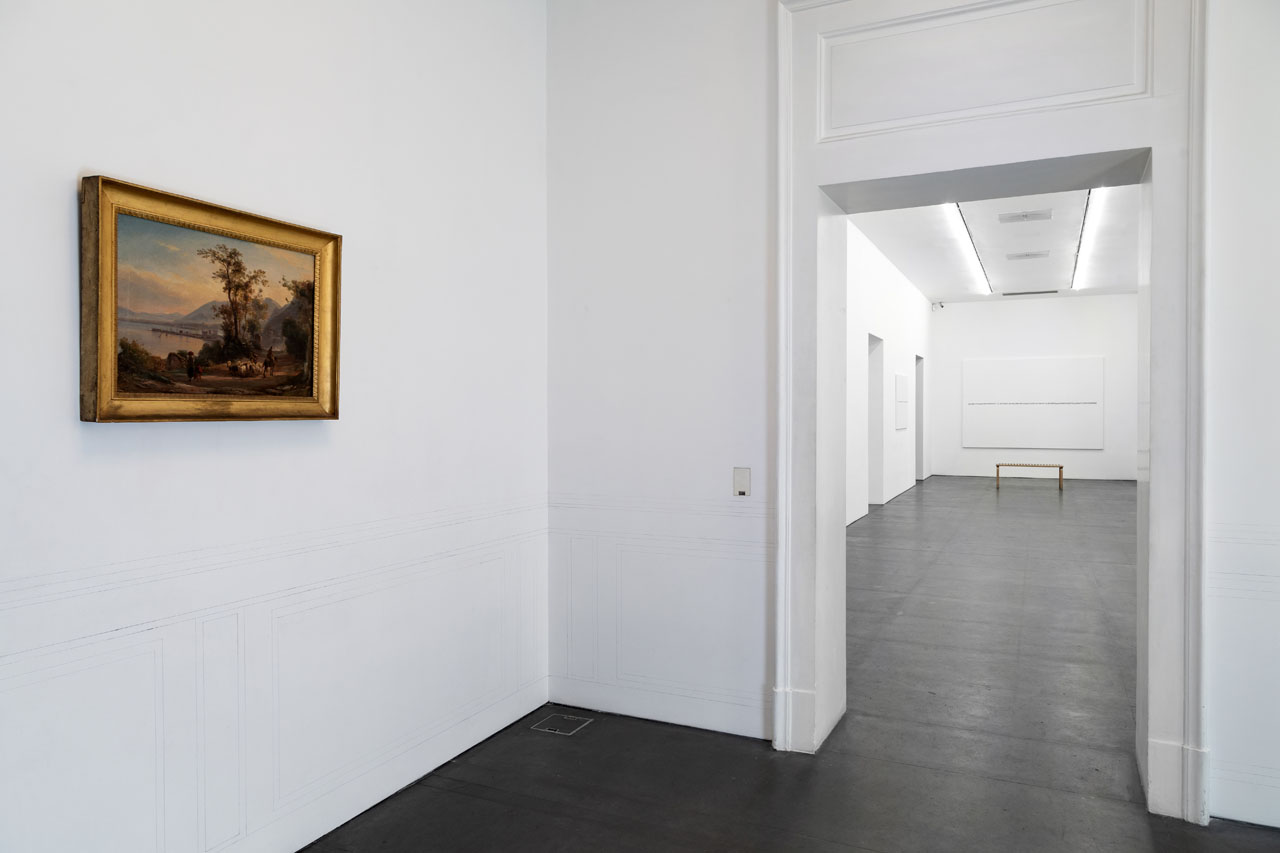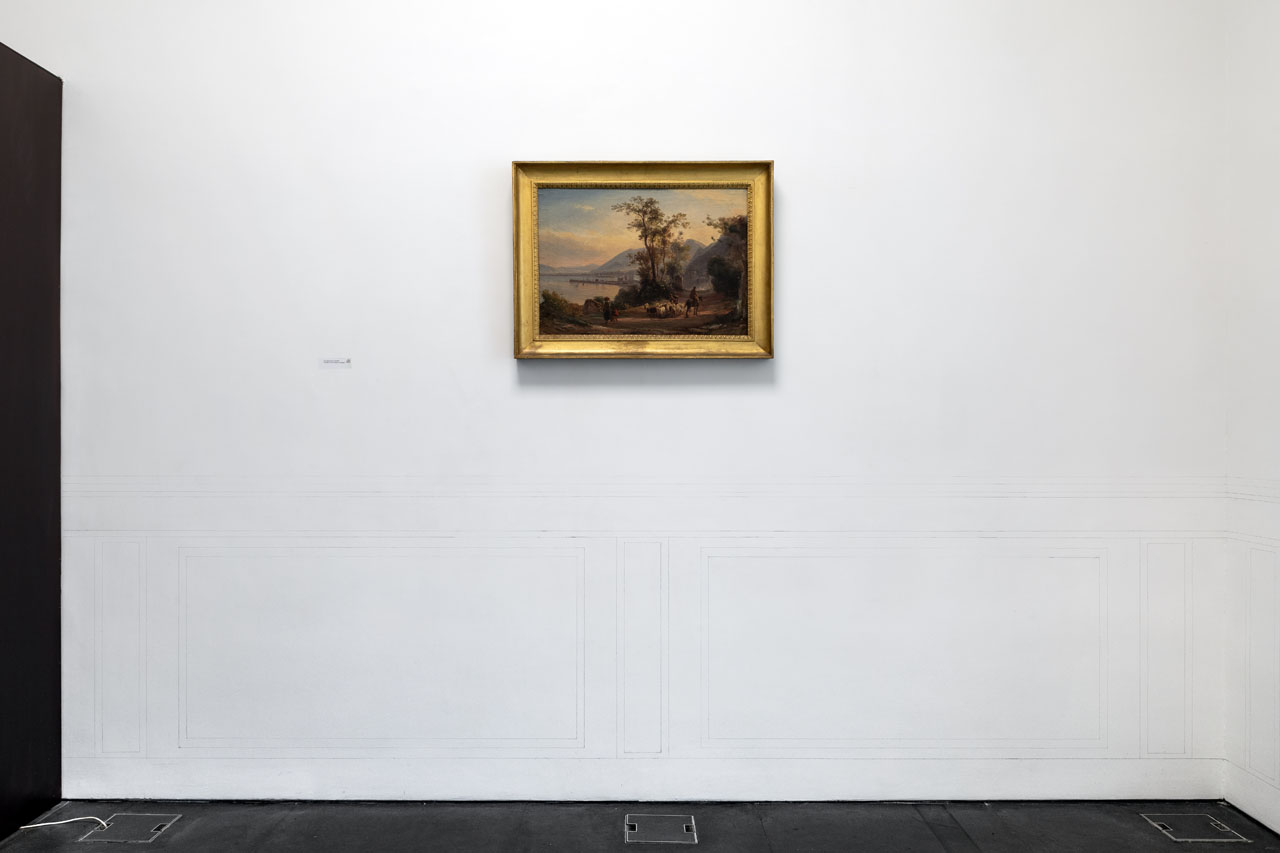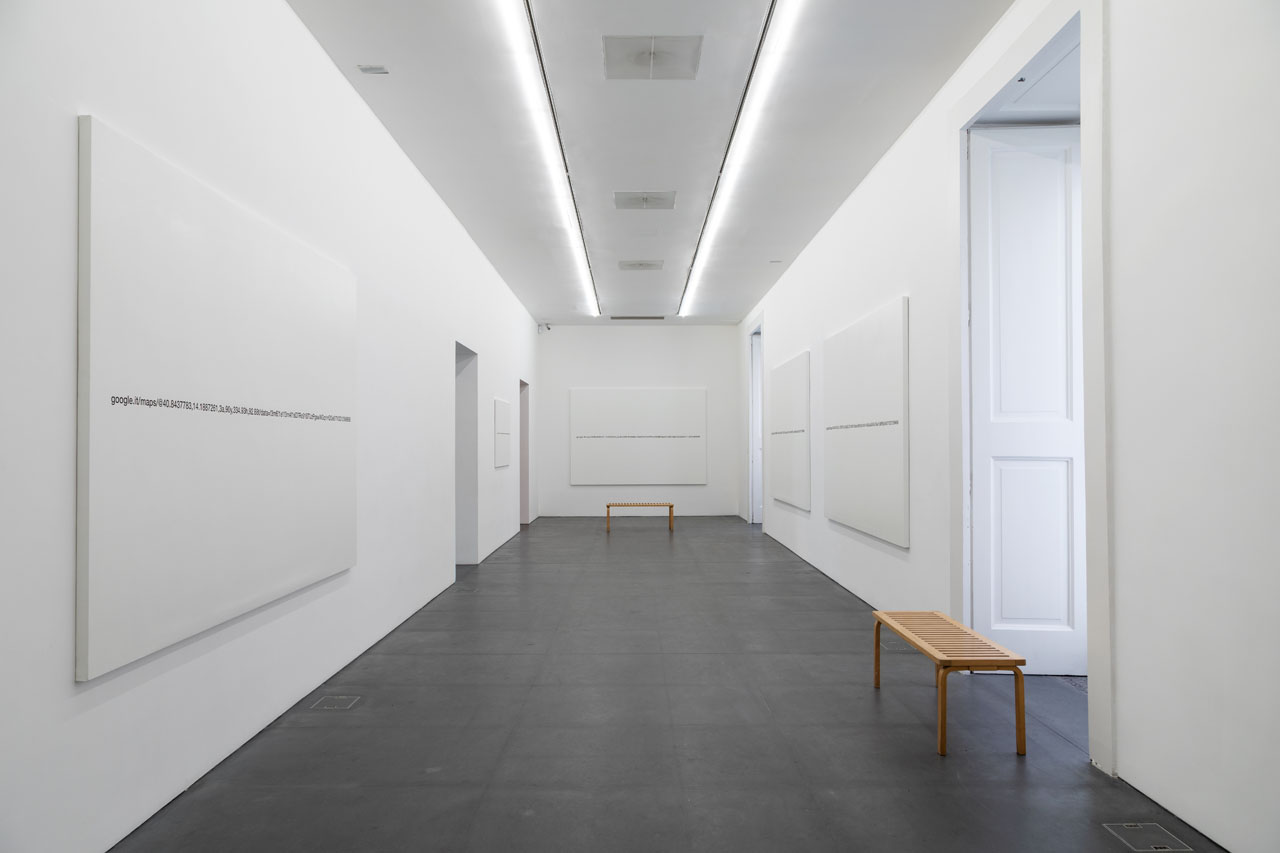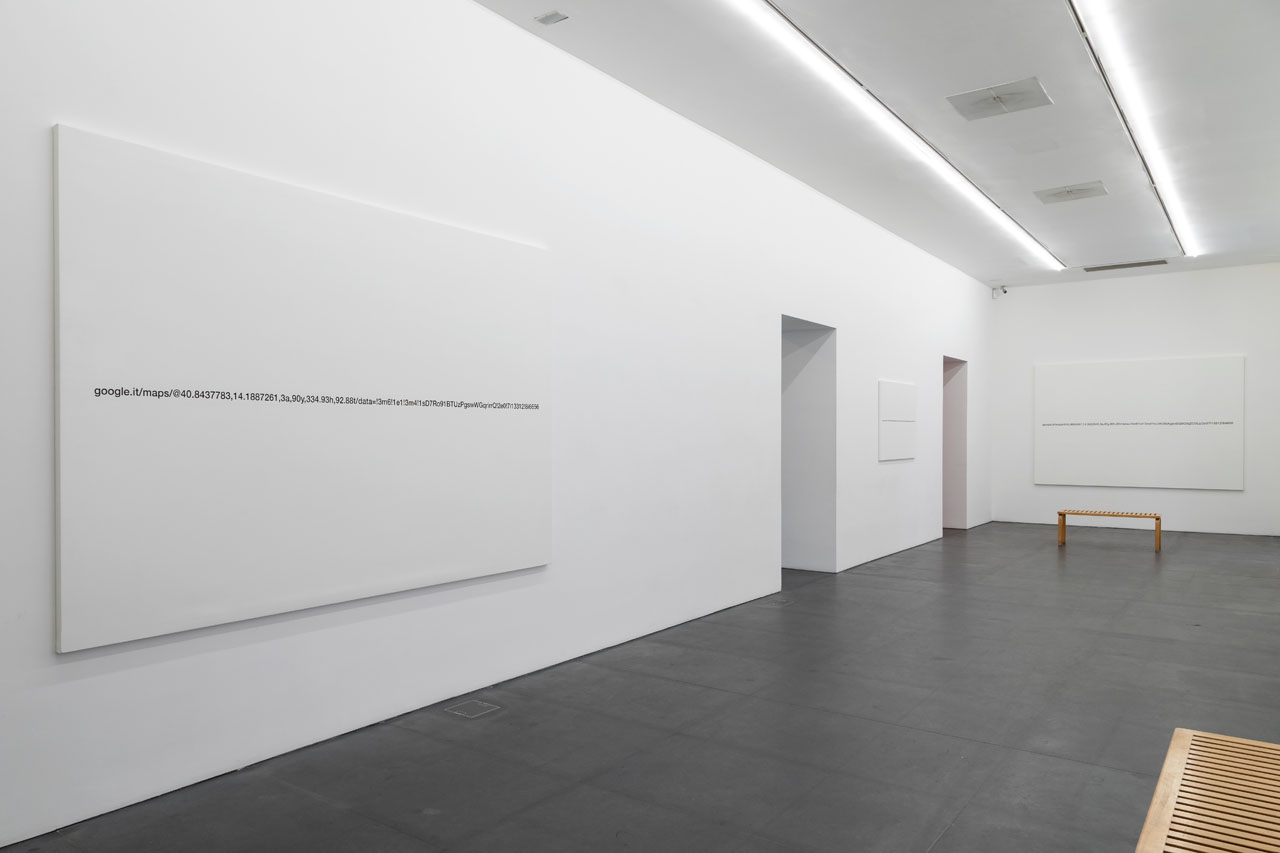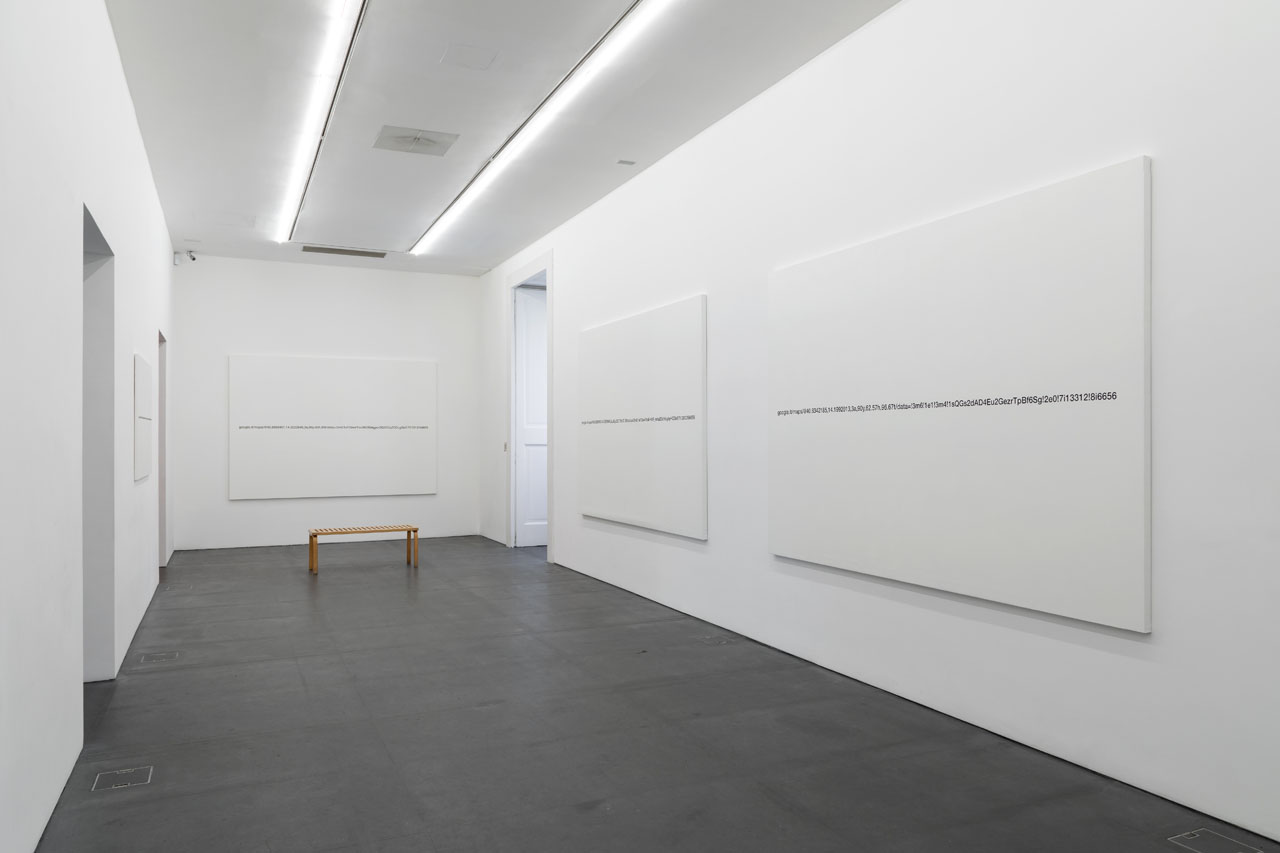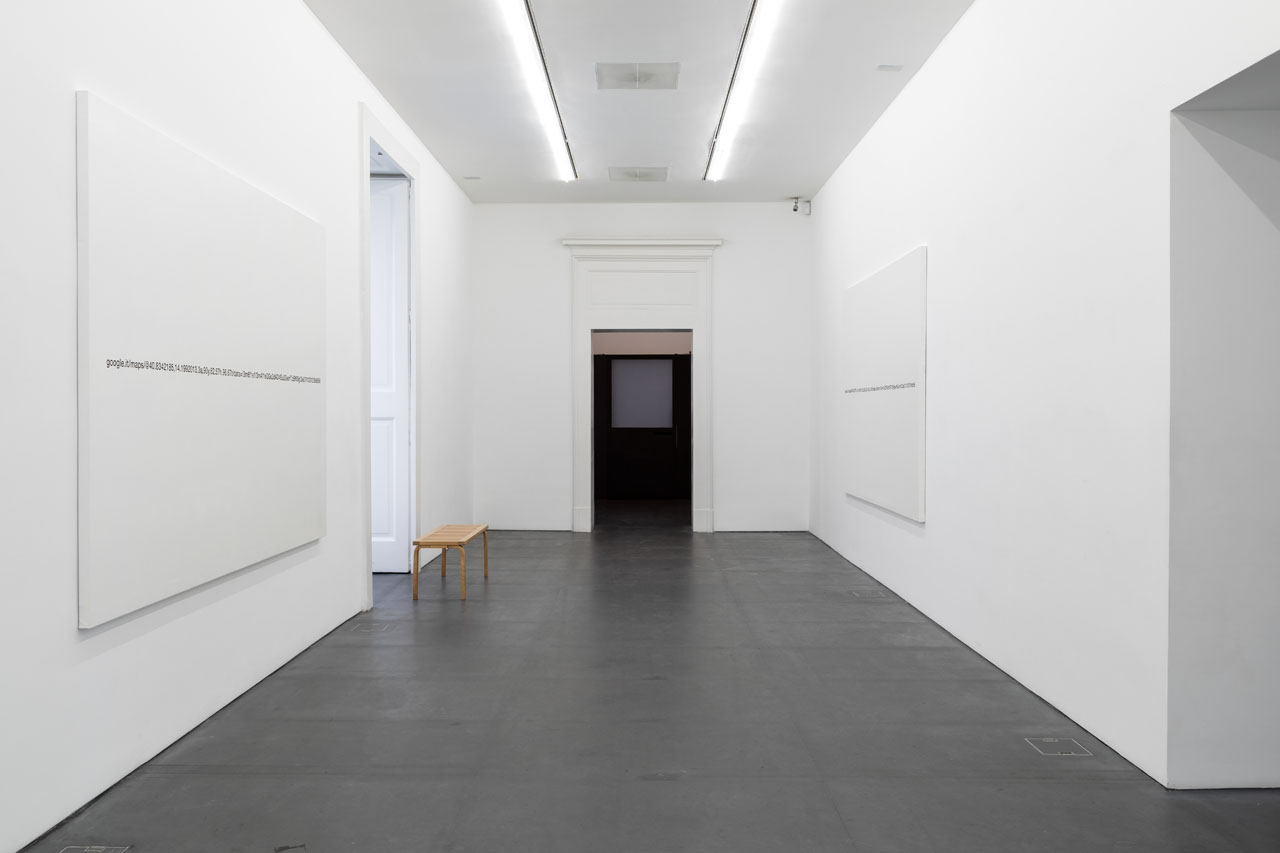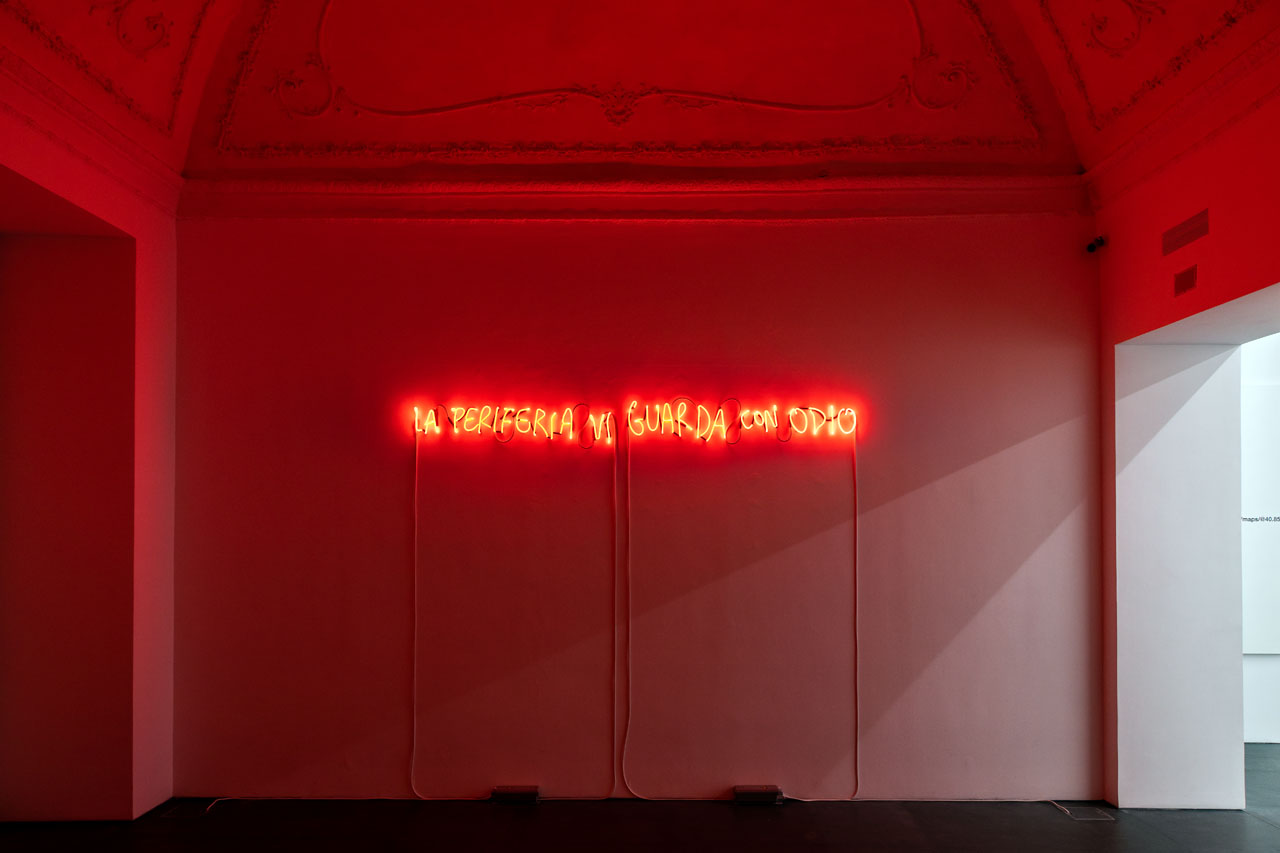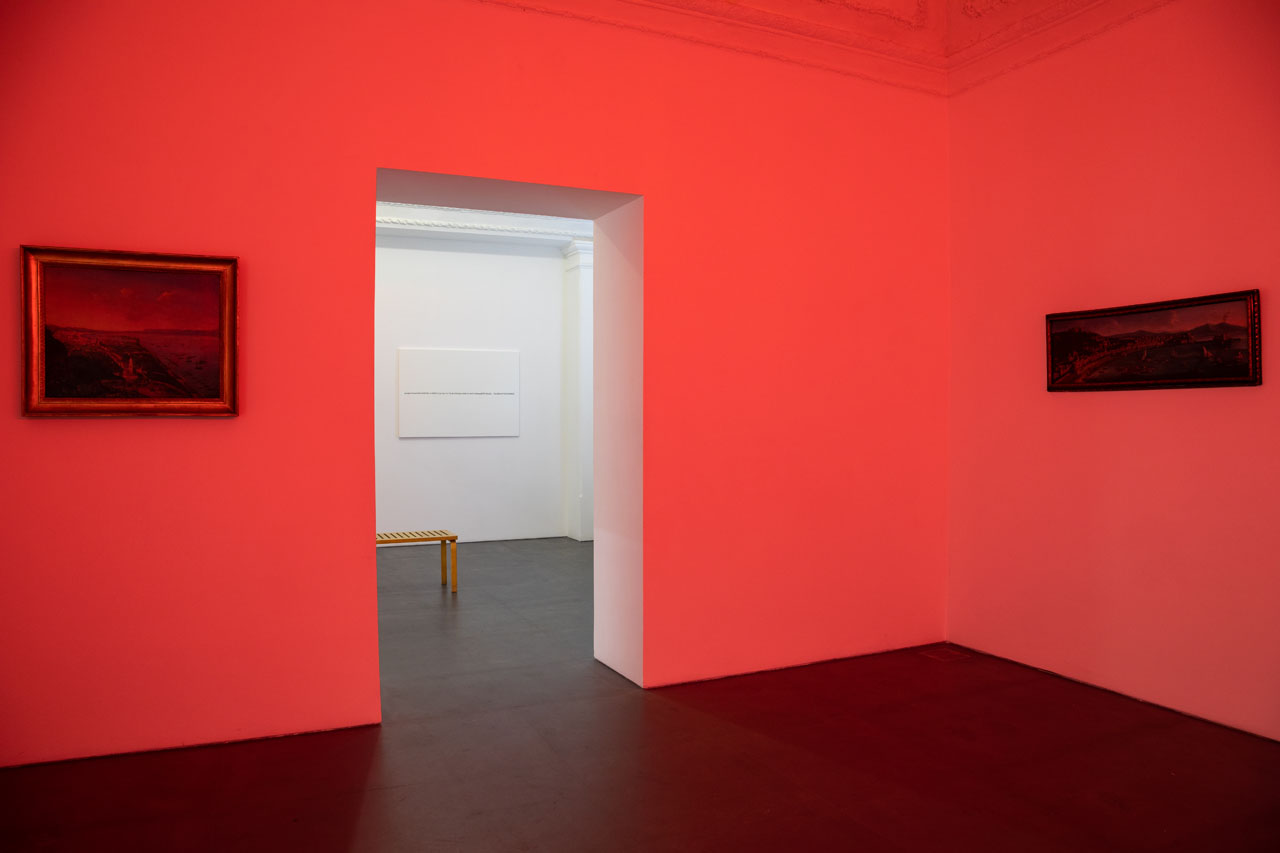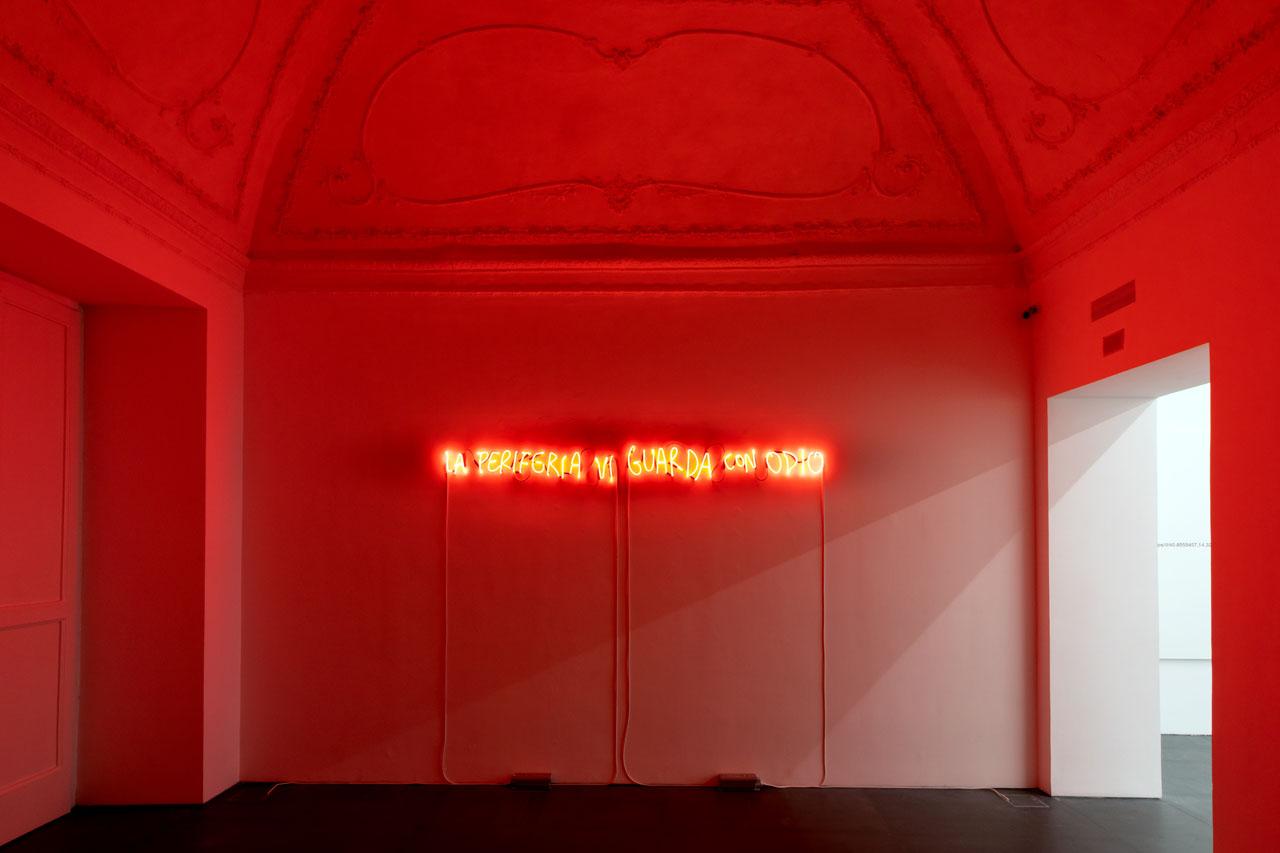Lia Rumma Gallery is pleased to present Landscapes, a solo exhibition of works by Domenico Antonio Mancini, which opens on May 4 in Naples.
The landscape is at the centre of the artist's new site-specific work, which is designed as an environmental installation.
Domenico Antonio Mancini creates an intense dialogue between the landscape of the nineteenth century and that of the contemporary world, showing paintings from the Neapolitan school together with previously unexhibited works of his own. Domenico Antonio Mancini's Landscapes consist of white monochromes dominated by transcriptions of some Internet addresses. The alphanumeric series correspond to digital images (street views) on the Google Maps website with a number of places in the city that have been significant in his life but that are also strategic for understanding the history and urban development of the contemporary city. Domenico Antonio Mancini's work reflects on the pictorial representation of the city and landscape as a traditional visual system. He expands on his investigation of pictorial codes, starting from the idea that the complexity of the city, of the relationship between centre and suburbs, the overlapping of individual lives, and the social situations and policies in which the city is both a prime mover and a backdrop, cannot all be captured on the surface of a painting. On the contrary, the surface must act as a breach towards an elsewhere. On the other hand, this also links back to the historic origin of the gallery in princely palaces, where paintings were "windows" onto imaginary, elegiac, mythological, exotic, and symbolic worlds. Domenico Antonio Mancini investigates the codes of the representation of landscape and their relationship with the nineteenth-century Neapolitan tradition of painting, which still influences our collective imagination. By doing so, he tells the story of the city and of the problematic relationship that still links the centre with the suburbs. The famous views of nineteenth-century painting tradition act as direct interlocutors in Mancini's discourse.
The first room in the gallery with one of the views on display has been redesigned by Mancini as the museum gallery from which the painting was loaned. This initial environmental installation is a sort of prologue that the visitor is led into. Finally, the work in coloured neon, La periferia vi guarda con odio – "the suburbs look at you with hatred", a phrase the artist saw on a wall in the historic city centre of Milan – is put forward as the exhibition statement and not just as a slogan. The neon illuminates the wonderful picture gallery of nineteenth-century works on loan from institutions and collectors in the city. La periferia vi guarda con odio is the cornerstone of the exhibition, for it presents the same process that is brought about by the paintings. Just as the Internet address triggers an escape from the picture plane through its link to a technological instrument, so neon refers to the city in all its complexity, and to the social and lively world of the suburbs. The project imposes a particular role of art, far from the idealised one of landscape as it is normally understood: the landscape is a representation of the complexity of a place, and of its inconsistencies and contradictions. The city represents our lives, with all their conflicts and disagreements, and their attempts at reconciliation. In any case, the image of the city is always subjective and individual, because it is linked to the personal lives of each one of us, and it cannot be resolved on the picture plane. The Landscapes respond to this need for breaking through and going for the essence. Art can create the imagination of individuals – and not just in terms of representing reality and the visible world, but also as a powerful vector of what, on the contrary, remains invisible to the eye.
Domenico Antonio Mancini
Landscapes
Photo Gallery
L'artista
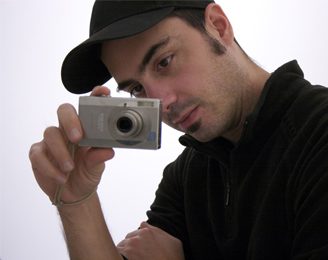
Domenico Antonio Mancini was born in Naples in 1980. He lives and works in Milan. He studied at the Academy of Fine Arts in Naples and through participation in various residences including the Antonio Ratti Foundation (Como, 2004) and the Mountain School of Art (Los Angeles, 2006). Interested in the
